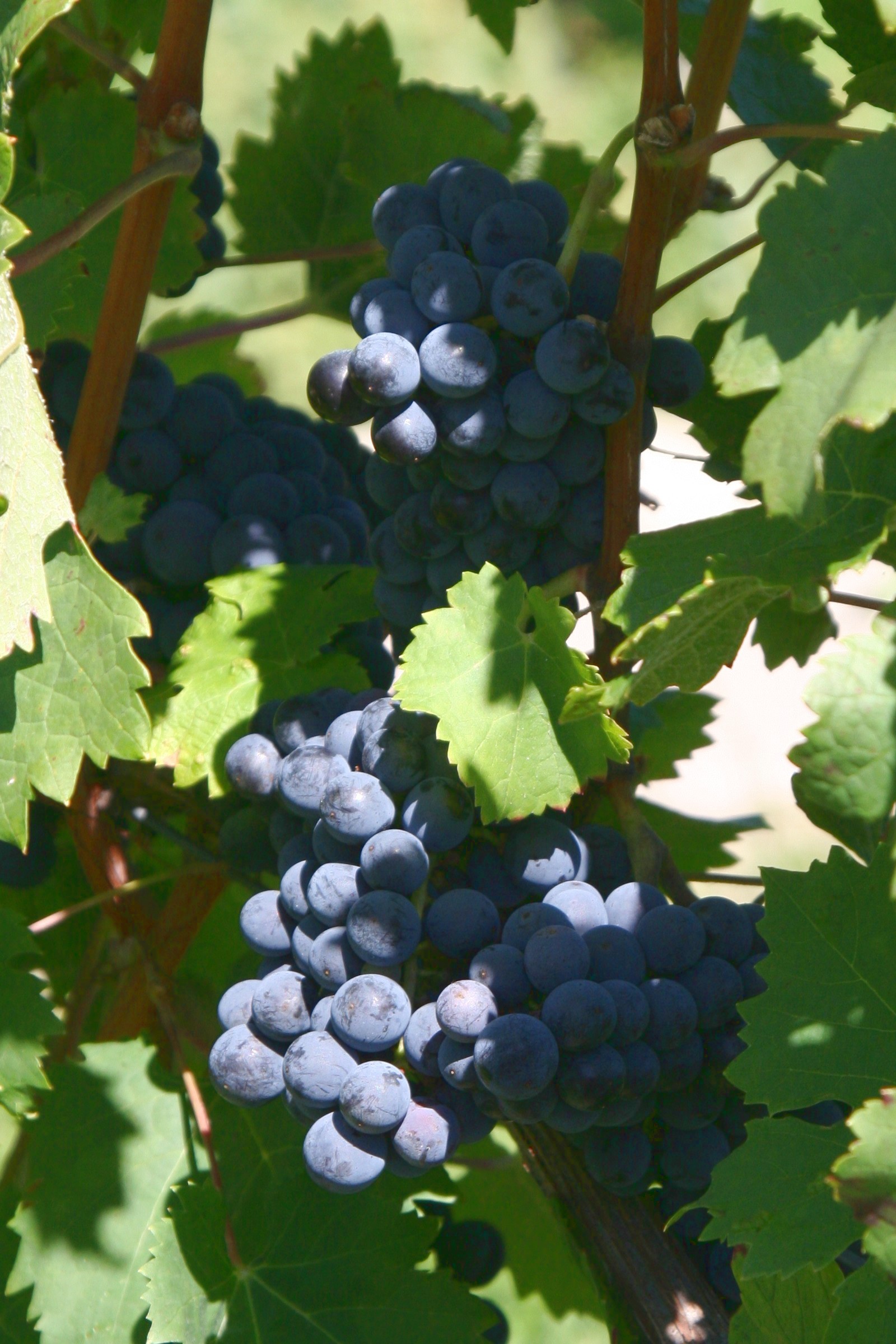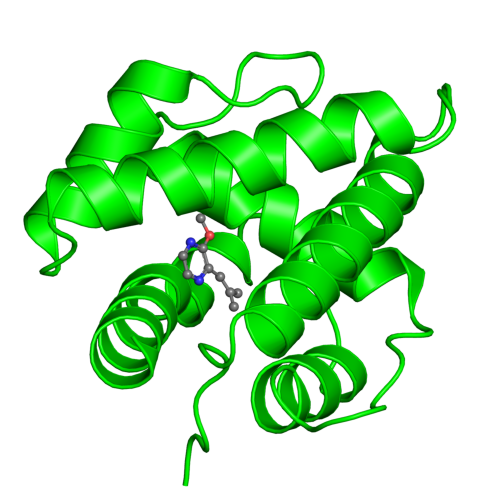|
Isopropyl Methoxypyrazine
Isopropyl methoxypyrazine (IPMP) is a methoxypyrazine, a class of chemical compounds that produce odors. The odor is rather undesirable and is produced by the Asian lady beetle or by the actinomycete ''Streptomyces'' sp. It can be detected by human taste at concentrations of as low as 2 nanograms per litre. Presence in wine grapes The odor of IPMP tends to be undesirable in the case of certain wines. Cabernet Sauvignon has high levels of methoxypyrazines.Oz Clarke ''Encyclopedia of Grapes'' pg 223 Harcourt Books 2001 Two methoxypyrazine compounds, 3-isobutyl-2-methoxypyrazine (IBMP) and 3-isopropyl-2-methoxypyrazine, are considered to be important determinants of green flavours in Sauvignon blanc wines. Presence in coffee IPMP is also an important flavour compound in coffee and is responsible for causing an off-taste called "potato taste" in East African coffee. The insects '' Antestiopsis'' are also implicated in causing the taste. See also * Alkylpyrazine Alkylpyrazi ... [...More Info...] [...Related Items...] OR: [Wikipedia] [Google] [Baidu] |
Methoxypyrazine
Methoxypyrazines are a class of chemical compounds that produce odors. The odors tend to be undesirable, as in the case of certain wines, or as defensive chemicals used by insects such as ''Harmonia axyridis'' which produces isopropyl methoxy pyrazine (IPMP). They have also been identified as List of additives in cigarettes, additives in cigarette manufacture. Detection thresholds are very low, typically near 2 parts per trillion (1 ng/L). Examples of methoxypyrazines in wine grapes Cabernet Sauvignon has high levels of methoxypyrazines.Oz Clarke ''Encyclopedia of Grapes'' pg 223 Harcourt Books 2001 Two methoxypyrazine compounds, 3-isobutyl-2-methoxypyrazine (IBMP) and 3-isopropyl-2-methoxypyrazine (IPMP), are considered to be important determinants of "green" (i.e., herbal, grassy, or vegetal) flavours in Sauvignon blanc wines.Marais, J., Hunter, J.J., & Haasbroek, P.D. (1999). Effect of microclimate, season and region on Sauvignon blanc grape composition and wine qual ... [...More Info...] [...Related Items...] OR: [Wikipedia] [Google] [Baidu] |
Asian Lady Beetle
''Harmonia axyridis'' is a large lady beetle or ladybug species that is most commonly known as the harlequin, Asian, or multicoloured Asian lady beetle. This is one of the most variable lady beetle species in the world, with an exceptionally wide range of colour forms. It is native to eastern Asia, and has been artificially introduced to North America and Europe to control aphids and scale insects. It is now common, well known, and spreading in those regions, and has also established in Africa and widely across South America. This species is conspicuous in North America, where it may locally be known as the Halloween beetle, as it often invades homes during October to overwinter. Other names include multivariate, southern, Japanese, and pumpkin ladybird. Description ''Harmonia axyridis'' is a typical coccinellid beetle in shape and structure, being domed and having a "smooth" transition between its elytra (wing coverings), pronotum, and head. It ranges from 5.5 to 8.5mm in size. ... [...More Info...] [...Related Items...] OR: [Wikipedia] [Google] [Baidu] |
Streptomyces
''Streptomyces'', from στρεπτός (''streptós''), meaning "twisted", and μύκης (''múkés''), meaning "fungus", is the largest genus of Actinomycetota, and the type genus of the family Streptomycetaceae. Over 700 species of ''Streptomyces'' bacteria have been described. As with the other Actinomycetota, streptomycetes are gram-positive, and have very large genomes with high GC content. Found predominantly in soil and decaying vegetation, most streptomycetes produce spores, and are noted for their distinct "earthy" odor that results from production of a volatile metabolite, geosmin. Different strains of the same species may colonize very diverse environments. Streptomycetes are characterised by a complex secondary metabolism. Between 5-23% (average: 12%) of the protein-coding genes of each ''Streptomyces'' species are implicated in secondary metabolism. Streptomycetes produce over two-thirds of the clinically useful antibiotics of natural origin (e.g., neomy ... [...More Info...] [...Related Items...] OR: [Wikipedia] [Google] [Baidu] |
Nanogram
To help compare different ''Order of magnitude, orders of magnitude'', the following lists describe various ''mass'' levels between 10−67 kilogram, kg and 1052 kg. The least massive thing listed here is a graviton, and the most massive thing is the Mass of the observable universe, observable universe. Typically, an object having greater mass will also have greater weight (see mass versus weight), especially if the objects are subject to the same gravitational field, gravitational field strength. Units of mass The table at right is based on the kilogram (kg), the base unit of mass in the International System of Units (SI). The kilogram is the only standard unit to include an SI prefix (''kilo-'') as part of its name. The ''gram'' (10−3 kg) is an SI derived unit of mass. However, the ''names'' of all SI mass units are based on ''gram'', rather than on ''kilogram''; thus 103 kg is a ''megagram'' (106 g), not a *''kilokilogram''. The ''tonne'' (t) is an SI-compatible u ... [...More Info...] [...Related Items...] OR: [Wikipedia] [Google] [Baidu] |
Cabernet Sauvignon
Cabernet Sauvignon () is one of the world's most widely recognized red wine grape varieties. It is grown in nearly every major wine producing country among a diverse spectrum of climates from Australia and British Columbia, Canada to Lebanon's Beqaa Valley. This grape variety appeared in France in the 17th century as a result of natural crossbreeding. Its popularity is often attributed to its ease of cultivation—the grapes have thick skins and the vines are hardy and naturally low yielding, budding late to avoid frost and resistant to viticulture hazards. The classic profile of Cabernet Sauvignon tends to be full-bodied wines with high tannins and noticeable acidity that contributes to the wine's aging potential. In cool areas, it has flavors of blackcurrant and green pepper; in warmer places, it may taste like black cherry and olive; in very hot climates, it can have a jammy flavor. History and origins For many years, the origin of Cabernet Sauvignon was not cl ... [...More Info...] [...Related Items...] OR: [Wikipedia] [Google] [Baidu] |
3-isobutyl-2-methoxypyrazine
3-Isobutyl-2-methoxypyrazine (2-isobutyl-3-methoxypyrazine also known as Grindstaff pyrazine) is a methoxypyrazine that is very similar to isopropyl methoxy pyrazine except that the alkyl side-group contains an isobutyl group attached to the carbon alpha to the methoxy sidegroup instead of an isopropyl side-group at that same carbon position. Natural occurrence The molecule is produced by some plants and is a contributor to the aroma of several plant-based foods. It is also seen to be produced in some forms of Planktothrix, blue-green algae; however, it is most frequently found in members of the genus ''Capsicum''. Specifically, it is what gives a bell pepper, along with other peppers, their distinctive smell. This is to such an extent that Grindstaff pyrazine is sometimes just called the "bell pepper pyrazine." The human nose can detect concentrations of this molecule below the part per trillion level making it one of the most odor intensive compounds on earth. Unlike capsaicin ... [...More Info...] [...Related Items...] OR: [Wikipedia] [Google] [Baidu] |
Sauvignon Blanc
Sauvignon blanc () is a green-skinned grape variety that originates from the city of Bordeaux in France. The grape most likely gets its name from the French words ''sauvage'' ("wild") and ''blanc'' ("white") due to its early origins as an indigenous grape in South West France. It is possibly a descendant of Savagnin. Sauvignon blanc is planted in many of the world's wine regions, producing a crisp, dry, and refreshing white varietal wine. The grape is also a component of the famous dessert wines from Sauternes and Barsac. Sauvignon blanc is widely cultivated in France, Chile, Romania, Canada, Australia, New Zealand, South Africa, Bulgaria, the states of Oregon, Washington, and California in the US. Some New World Sauvignon blancs, particularly from California, may also be called "Fumé Blanc", a marketing term coined by Robert Mondavi in reference to Pouilly-Fumé. Depending on the climate, the flavor can range from aggressively grassy to sweetly tropical. In cooler cl ... [...More Info...] [...Related Items...] OR: [Wikipedia] [Google] [Baidu] |
Antestiopsis
''Antestiopsis'' is a genus of shield bug in the tribe Antestiini: commonly known as antestia or variegated coffee bugs. Several species in eastern Africa are pests of coffee plants, giving the coffee beans a distinctive 'potato taste'. Species ''BioLib'' includes: # '' Antestiopsis anchora'' (Thunberg, 1783) # '' Antestiopsis cederwaldi'' (Bergroth, 1912) # '' Antestiopsis clymeneis'' (Kirkaldy, 1909) # '' Antestiopsis cruciata'' (Fabricius, 1775) # '' Antestiopsis crypta'' Greathead, 1966 # '' Antestiopsis faceta'' (Germar, 1837) # '' Antestiopsis facetoides'' Greathead, 1966 # '' Antestiopsis falsa'' (Schouteden, 1912) # '' Antestiopsis intricata'' (Ghesquierei & Carayon, 1948) # '' Antestiopsis lepelleyi'' Greathead, 1965 # '' Antestiopsis lineaticollis'' (Stål, 1853) # '' Antestiopsis littoralis'' Greathead, 1965 # '' Antestiopsis notia'' (Dallas, 1851) # '' Antestiopsis nuba'' Linnavuori, 1975 # '' Antestiopsis orbitalis'' (Westwood, 1837) # '' Antestiopsis pallens'' V ... [...More Info...] [...Related Items...] OR: [Wikipedia] [Google] [Baidu] |
Alkylpyrazine
Alkylpyrazines are chemical compounds based on pyrazine with different substitution patterns. Some alkylpyrazines are naturally occurring highly Aroma compound, aromatic substances which often have a very low odor threshold and contribute to the taste and aroma of various foods including cocoa, baked goods, coffee and wines. Alkylpyrazines are also formed during the cooking of some foods via Maillard reactions. Examples File:2-Methylpyrazine.svg , 2-Methylpyrazine (found in roasted sesame) File:2,3-Dimethylpyrazine.svg , 2,3-Dimethylpyrazine (found in roasted sesame) File:2,5-Dimethylpyrazine.svg , 2,5-Dimethylpyrazine (asparagus, tea, crispbread, malt, shrimp, soy, squid, Swiss cheese, bread, roasted sesame) File:Tetramethylpyrazine v2.svg , 2,3,5,6-Tetramethylpyrazine (nattō, fermented cocoa beans) 2-Methylpyrazine 2-Methylpyrazine was the volatile odorant found at the highest concentration in roasted sesame seed oil. 2,3-Dimethylpyrazine 2,3-Dimethylpyrazine is a compo ... [...More Info...] [...Related Items...] OR: [Wikipedia] [Google] [Baidu] |
Pyrazines
Pyrazine is a heterocyclic aromatic organic compound with the chemical formula C4H4N2. It is a symmetrical molecule with point group D2h. Pyrazine is less basic than pyridine, pyridazine and pyrimidine. It is a ''"deliquescent crystal or wax-like solid with a pungent, sweet, corn-like, nutty odour"''. Pyrazine and a variety of alkylpyrazines are flavor and aroma compounds found in baked and roasted goods. Tetramethylpyrazine (also known as ligustrazine) is reported to scavenge superoxide anions and decrease nitric oxide production in human granulocytes. Synthesis Many methods exist for the organic synthesis of pyrazine and its derivatives. Some of these are among the oldest synthesis reactions still in use. In the Staedel–Rugheimer pyrazine synthesis (1876), 2-chloroacetophenone is reacted with ammonia to the amino ketone, then condensed and then oxidized to a pyrazine. A variation is the Gutknecht pyrazine synthesis (1879) also based on this selfcondensation, but dif ... [...More Info...] [...Related Items...] OR: [Wikipedia] [Google] [Baidu] |
Isopropyl Compounds
In organic chemistry, a propyl group is a three-carbon alkyl substituent with chemical formula for the linear form. This substituent form is obtained by removing one hydrogen atom attached to the terminal carbon of propane. A propyl substituent is often represented in organic chemistry with the symbol Pr (not to be confused with the element praseodymium). An isomeric form of propyl is obtained by moving the point of attachment from a terminal carbon atom to the central carbon atom, named isopropyl or 1-methylethyl. To maintain four substituents on each carbon atom, one hydrogen atom has to be moved from the middle carbon atom to the carbon atom which served as attachment point in the ''n''-propyl variant, written as . Linear propyl is sometimes termed normal and hence written with a prefix ''n''- (i.e., ''n-''propyl), as the absence of the prefix ''n''- does not indicate which attachment point is chosen, i.e. absence of prefix does not automatically exclude the possibility of i ... [...More Info...] [...Related Items...] OR: [Wikipedia] [Google] [Baidu] |






